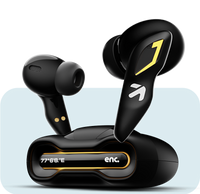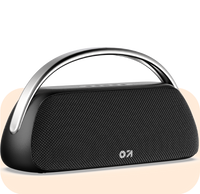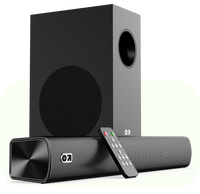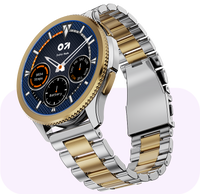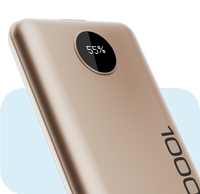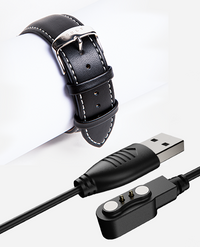When it comes to choosing the right pair of headphones, the debate between over-ear headphones and in-ear headphones never seems to end. Both styles deliver great sound, but they’re designed for completely different experiences. Whether you’re working out, travelling, or just relaxing with your playlist, the right fit depends on how you use them and what you value most.
Let’s break down the differences to help you decide which one suits your lifestyle better.
Understanding the Two Styles
Over-Ear Headphones:
These are the large, cushioned headphones that fully cover your ears. They’re known for deep bass, immersive sound, and excellent noise isolation. Over-ear models are a go-to choice for audiophiles, gamers, and anyone who wants a cinematic listening experience.

In-Ear Headphones (Earbuds):
Compact and lightweight, these fit snugly inside your ears. Modern in-ear headphones, especially true wireless earbuds, are built for convenience and portability. They’ve become the daily choice for commuters, fitness enthusiasts, and multitaskers.

Sound Quality and Performance
When it comes to sound, over-ear headphones generally have the edge. Their larger drivers produce a wider frequency range, offering richer bass and clearer highs. You feel the music as much as you hear it.
However, today’s in-ear headphones like GoBoult’s (Formerly Boult) advanced TWS lineup, deliver surprisingly powerful sound for their size. With improved tuning and a snug fit, they create excellent noise isolation and balanced audio that’s ideal for casual and on-the-go listening.
Comfort and Fit
Over-Ear Headphones:
-
Plush ear cushions and adjustable headbands make them comfortable for long listening sessions.
-
The downside? They’re bulkier, so they might feel warm or heavy after hours of wear.
In-Ear Headphones:
-
Extremely lightweight and pocket-friendly.
-
Silicone or foam ear tips ensure a secure fit during movement.
-
Perfect for workouts, travel, and daily commutes.
If comfort means something compact and barely noticeable, in-ear headphones win. But for long sessions and immersive sound, over-ear headphones still take the crown.
Battery Life and Portability
-
Over-ear headphones come with larger batteries, often lasting 30–60 hours on a single charge. They’re great for long trips or binge-listening sessions.
-
In-ear headphones rely on their charging cases, which provide quick top-ups. Most deliver 25–40 hours of total playback time, depending on the model.
If portability matters more than long battery cycles, go with in-ears. But if you want uninterrupted music for days, over-ear is your pick.
Noise Cancellation and Usage
Both headphone types now come with advanced noise cancellation.
-
Over-ear headphones naturally block out ambient noise due to their closed design, making them ideal for office use or long flights.
-
In-ear headphones use Active Noise Cancellation (ANC) and Environmental Noise Cancellation (ENC) to keep calls and music clear, even in noisy places.
GoBoult’s (Formerly Boult) in-ear TWS range combines ANC with deep bass, giving you a great mix of silence and sound clarity, without carrying the extra bulk.
Which One Should You Choose?
|
Preference |
Ideal Choice |
|
Deep bass and immersive sound |
Over-Ear Headphones |
|
Lightweight and easy to carry |
In-Ear Headphones |
|
Long battery life |
Over-Ear Headphones |
|
Workout or travel use |
In-Ear Headphones |
|
Office or home setup |
Over-Ear Headphones |
Both styles have their strengths. If you love powerful sound and don’t mind a bigger build, go for over-ear models. If you value mobility, compact design, and versatility, in-ear headphones are the smarter choice.
Explore GoBoult’s (Formerly Boult) Range
Whether you prefer over-ear comfort or in-ear convenience, GoBoult has a range built for every listener.
-
For those who love immersive sound and comfort, explore the GoBoult over-ear headphones.
-
For compact, powerful, and wireless performance, check out the True Wireless Earbuds - a perfect blend of sound and portability.
FAQs
1. Which is better for sound quality, over-ear or in-ear headphones?
Over-ear headphones usually offer a richer, more detailed sound due to larger drivers, but premium in-ear earbuds have improved greatly and deliver impressive clarity.
2. Are in-ear headphones good for long listening sessions?
Yes, especially lightweight models with soft ear tips. However, over-ear headphones might feel more comfortable for extended use.
3. Which headphones are best for travel?
In-ear headphones are better for travel because they’re compact, easy to carry, and often come with noise cancellation.
4. Do over-ear headphones have better noise cancellation?
Generally, yes because they naturally block external sound. But modern in-ear earbuds with ANC offer strong competition.
5. Are in-ear headphones safe for daily use?
Absolutely. Just keep the volume moderate to avoid ear fatigue and ensure a proper fit for comfort.


